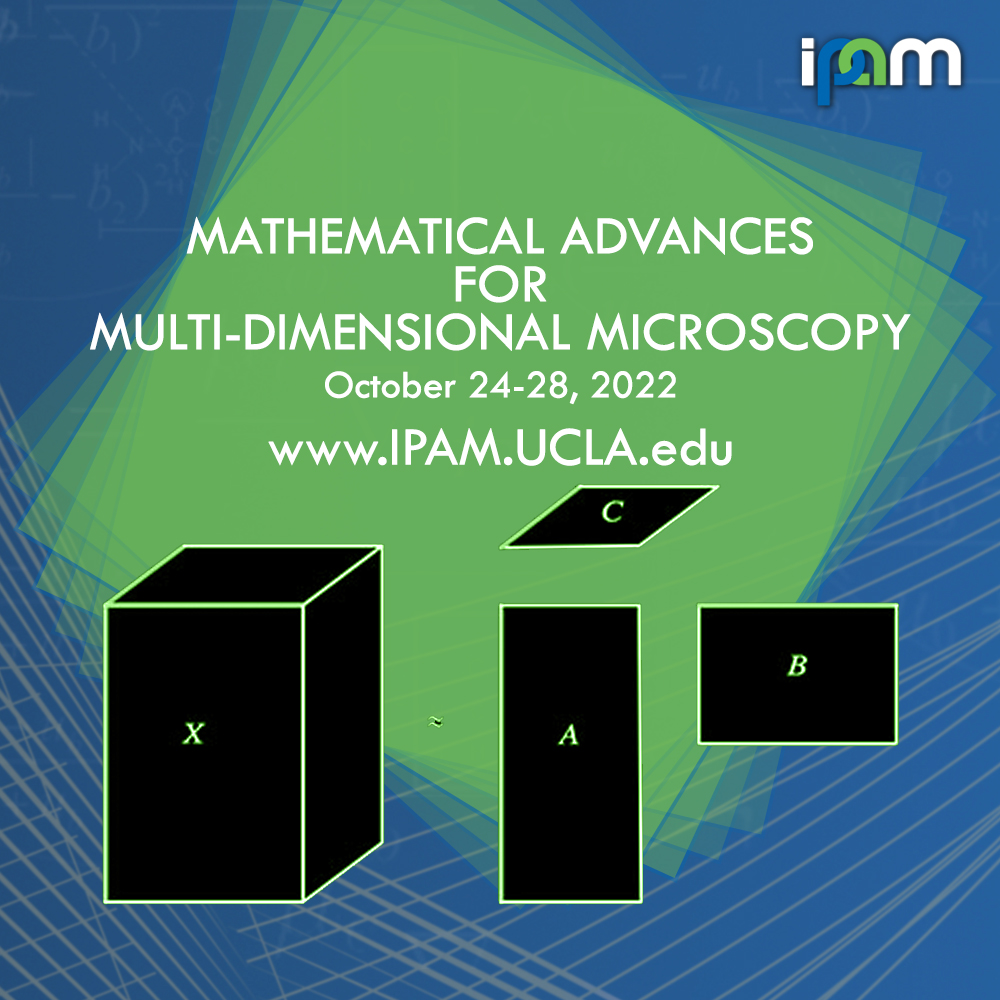Christoph Koch - Reconstructing 2D and 3D atomic structure from various types of TEM data
Presenter
October 25, 2022
Abstract
Recorded 25 October 2022. Christoph Koch of Humboldt-Universität presents "Reconstructing 2D and 3D atomic structure from various types of TEM data" at IPAM's Mathematical Advances for Multi-Dimensional Microscopy Workshop.
Abstract: The scattering of fast electrons by the three-dimensional arrangement of atoms can be detected in various ways: high-resolution images (includes HRTEM, STEM, inline and off-axis holograms, images recorded using a phase plate, …), diffraction patterns, the fine structure of electron energy-loss spectra, or combinations of these, such as series of diffraction patterns (4D-STEM) or of momentum vs. energy-loss/gain maps recorded at various probe positions. Data recorded in an image plane are typically rather straight forward to interpret (especially for 2D materials1), but, due to the resolution-limited transfer function they may not provide the maximum information that can be obtained from a single orientation of the sample (especially relevant for 3D structures). 4D-STEM data, especially when reconstructed using a multislice-based reconstruction algorithm, are capable of revealing more information about the 3D atomic structure of a TEM sample than a single image, focal series of images, or off-axis hologram, both laterally2 and also along the direction of the electron beam3.
Since the electron beam experiences predominantly a phase shift when traversing the electrostatic potential of atoms this talk will first compare different approaches to (indirectly) measure this phase shift. While some authors claim that ptychography is more dose-efficient than HRTEM for the recovery of low spatial frequency information [4] and also for high spatial frequencies when considering partial temporal coherence [5], others show that the dose efficiency of inline holography and ptychography is nearly the same [6]. When treating partial (spatial) coherence by considering multiple probes, whose diffraction patterns are incoherently added, defocused probe ptychography has been shown to be more dose efficient than ADF-STEM imaging of a TMDC bilayer [7].
In addition to comparing phase imaging techniques, recent experimental results obtained by methods such as inline holography and ptychography to retrieve the 2D and 3D arrangements of atoms in different materials systems will be presented. One practical disadvantage of ptychography is the large amount of data that is generated by recording a full diffraction pattern at each beam position. We will show that the amount of data that needs to be stored can be reduced by more than 3 orders of magnitude without impacting resolution of the reconstruction, both laterally and also along the beam direction (see Fig.1)9.
Learn more online at: http://www.ipam.ucla.edu/programs/workshops/workshop-ii-mathematical-advances-for-multi-dimensional-microscopy/?tab=schedule
